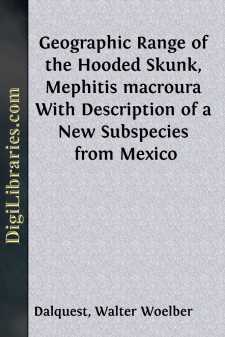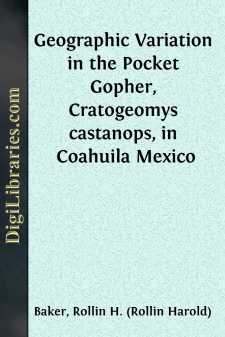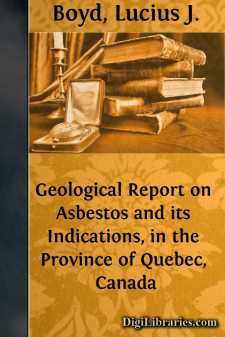Fiction
- Action & Adventure 180
- Biographical 15
- Christian 59
- Classics
- Coming of Age 5
- Contemporary Women 3
- Erotica 8
- Espionage/Intrigue 12
- Fairy Tales, Folklore & Mythology 236
- Family Life 169
- Fantasy 117
- Gay 1
- General 596
- Ghost 32
- Historical 808
- Horror 43
- Humorous 159
- Jewish 25
- Legal 4
- Medical 22
- Mystery & Detective 315
- Political 49
- Psychological 41
- Religious 64
- Romance 158
- Sagas 11
- Science Fiction 730
- Sea Stories 113
- Short Stories (single author) 537
- Sports 10
- Suspense 1
- Technological 8
- Thrillers 2
- Urban Life 31
- Visionary & Metaphysical 1
- War & Military 173
- Westerns 199
Classics Books
Sort by:
CHAPTER I.THE FIRST PERFORMANCE OF "HAMLET.""Who ever loved that loved not at first sight?"â Quoted in "As You Like It," from Marlowe's "Hero and Leander." At three o'clock in the afternoon of the cold first Monday in March, 1601, a red flag rose, and a trumpet sounded thrice, from a little gabled turret protruding up out of a large wooden building in a...
more...
The hooded skunk, Mephitis macroura Lichtenstein, can be distinguished from the only other species in the genus, Mephitis mephitis Schreber, by the larger tympanic bullae, in the white-backed color phase by having some black hairs mixed with the white hairs of the back, and in the black-backed phase by having the two white stripes widely separated and on the sides of the animal instead of narrowly...
more...
by:
John A. White
Capitalized color terms in the following accounts are of Ridgway, "Color Standards and Color Nomenclature," Washington, D.C., 1912. The measurements of the skull that were used in this study were made as shown in White (1953:566, fig. 1). These are: Greatest length of skull, zygomatic breadth, cranial breadth, length of nasals, length of lower tooth-row, condylo-alveolar length of mandible, and...
more...
CHAPTER I. THE TEMPLE OF VESTA "That's a pleasant looking house," said the young doctor. "What's the matter with my getting taken in there?" The old doctor checked his horse, and looked at the house with a smile. "Nothing in the world," he said, "except the small fact that they wouldn't take you." "Why not?" asked the young man, vivaciously....
more...
by:
J. Knox Jones
In his "Revision of the pocket mice of the genus Perognathus," Osgood (1900:18-20) reviewed the distribution, as then known, of Perognathus fasciatus and recognized two geographic races—Perognathus fasciatus [fasciatus] Wied-Neuwied in eastern Montana and Wyoming and adjacent parts of North and South Dakota, and Perognathus fasciatus infraluteus Thomas, known only from the type locality at...
more...
The plateau pocket gopher, Cratogeomys castanops, inhabits open lands from southeastern Colorado southward onto the Mexican Plateau as far south as southern San Luis Potosà and southeastern Zacatecas and southeastward to the Coastal Plain of northern Tamaulipas. This species occurs at elevations from as low as 26 feet at Matamoras in Tamaulipas to as high as 8700 feet in valleys of south-eastern...
more...
In the course of the preparation of a synopsis of the North American terrestrial microtines by one of us (Cockrum), and the completion of a Master's thesis on the geographical variation of the red-backed mice of Wyoming by the other (Fitch) we had occasion to study the red-backed mice of the southern Rocky Mountain region (see figure 1). Results of these studies are the recognition of two...
more...
by:
Lucius J. Boyd
HAVING been called upon to make a close and careful examination of the geological formations in the eastern townships of Garthby, Wolf'stown, and Coleraine, situated in the province of Quebec, Canada, I gave special attention to the distribution of the Asbestos-bearing rocks (serpentine), which have been, in my opinion, heretofore only partially traced. Perhaps this was owing to the difficulties...
more...
by:
J. Cecil Hughes
Chapter ITHE ROCKS AND THEIR STORYWalking along the sea shore, with all its varied interest, many must from time to time have had their attention attracted by the shells to be seen, not lying on the sands, or in the pools, but firmly embedded in the solid rock of the cliffs and of the rock ledges which run out on to the shore, and have, it may be, wondered sometimes how they got there. At almost any...
more...
by:
Thomas Seccombe
GEORGE BORROW. It is a singular coincidence, perhaps, that during one and the same summer we should be celebrating centenaries of Samuel Pepys and George Borrow. Pepys died in the early summer of 1703; Borrow was born in July, 1803. Unlike each other in almost every respect, they are dui palor, as Borrow would say, in one very material point. The reputation of each of them has risen to such a...
more...











